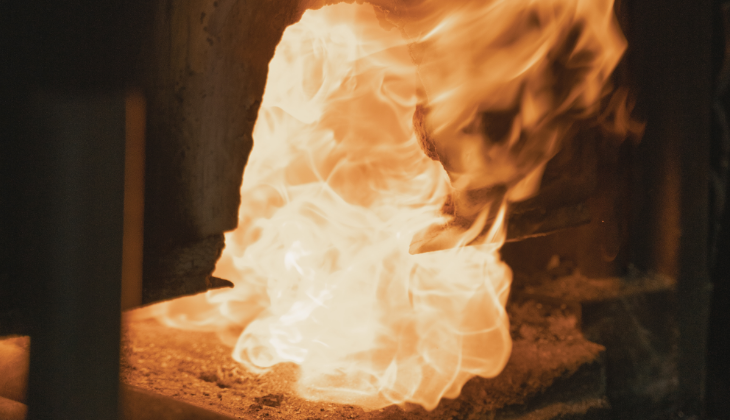Tempering: The Art of Enhancing Steel’s Strength and Durability

What is Tempering?
Tempering is a crucial stage in the heat treatment process in metallurgy. This process is specifically used to improve the properties of steel. Tempering involves heating hardened steel in a controlled manner and then cooling it. But why is this process so critical?
Why is the Tempering Heat Treatment Performed?
During the hardening process, steel forms a phase called martensite, which gives it exceptional hardness. However, martensite also increases brittleness. This is where tempering comes into play: it reduces the brittleness of martensite and increases the overall durability of steel.
Tempering ensures that steel is not only hard but also resistant to fractures. This process makes steel safer and more durable in its applications. Tempered steel is especially used in structural components subjected to high stress, such as bridges, buildings, and automotive parts.
Advantages of Tempering
Tempering optimizes the mechanical properties of materials, providing significant advantages across a wide range of industrial applications. The main benefits of tempering include:
- Impact Resistance: Tempered steel is more resistant to impacts and shocks, making it ideal for tough applications.
- Reduced Brittleness: Tempering reduces the brittleness of steel, making it more durable.
- Hardness: The process enhances the hardness of steel, making it more resistant to wear.
- Flexibility and Ductility: Tempering increases the ductility and flexibility of the material, making it more resistant to deformation.
- Microstructure Improvement: It reduces internal stresses, stabilizing and balancing the internal structure of the steel.
- Prevention of Cracks: Tempering prevents stress-related cracks, thereby extending the material’s lifespan.
Differences Between Conventional Steel and Tempered Steel
- Brittleness: Conventional steel is hard but brittle. Tempered steel, however, is both hard and durable.
- Flexibility: Tempering enhances the flexibility of steel, providing greater resistance to deformation under high loads.
- Usage Areas: Tempered steel is suitable for a wider range of applications and more demanding conditions.
How is Tempering Performed?
The tempering process typically consists of three main steps:
- Heating: The hardened steel is heated to a specific temperature, which varies depending on the type of steel and the desired properties.
- Holding: The steel is maintained at this temperature for a set period. This step reduces internal stresses within the steel.
- Cooling: The steel is cooled in a controlled manner, stabilizing its new structure.
Industrial Applications and Uses of Tempering
Tempering is a critical heat treatment method used to optimize the mechanical properties of steel and other metal alloys. It strengthens metals while enhancing their durability and resistance to fractures. But how and where is tempering used in the industry?
- Engine Components: Engine pistons, crankshafts, and camshafts, which require high strength and wear resistance, are treated with tempering.
- Transmission Gears: These components are tempered to enhance their load-bearing capacity.
- Suspension Systems: Suspension springs and shock absorbers are strengthened through tempering.
- Steel Beams and Columns: These are tempered to support large structural loads.
- Bridges: Load-bearing components in bridges are made from tempered steel for durability and longevity.
- Reinforced Concrete Bars: Tempering is applied to prevent cracking in concrete and maintain structural integrity.
- Crushers and Grinders: These components are tempered for high wear resistance.
- Conveyor Systems: Belt conveyors and other transport systems are made more durable with tempered steel.
- Plows and Disks: Agricultural tools requiring high wear resistance are tempered.
- Excavator and Loader Arms: Construction machinery components are tempered for durability.
- Drill Bits and Milling Tools: High hardness and wear resistance are achieved through tempering.
- Molds and Press Dies: Production molds are tempered for durability and long service life.
Tempering plays a vital role in improving the mechanical properties of steel and other metals, making it essential for various industrial applications. By increasing the hardness and durability of steel while reducing brittleness, this process ensures safer and longer-lasting materials. From automotive to construction, aerospace to mining, tempered steel maximizes performance and safety.
Differences Between Tempering and Annealing
Tempering and annealing are two commonly used heat treatment techniques in metallurgy. Both processes alter the microstructure of metals to improve specific mechanical properties. However, understanding the differences between these two methods is critical for making the right material engineering and application choices.
Purposes of Tempering
- To reduce brittleness.
- To increase durability and ductility.
- To relieve internal stresses.
Annealing, on the other hand, is a heat treatment process used to improve machinability, eliminate internal stresses, and recrystallize the microstructure of a material. It is performed by heating the metal to a specific temperature and then slowly cooling it.
Purposes of Annealing:
- To eliminate internal stresses.
- To improve the material's ductility and machinability.
- To recrystallize the microstructure.
In summary, tempering and annealing are two fundamental heat treatment techniques used to enhance the mechanical properties of steel and other metals. While tempering reduces brittleness and increases durability, annealing eliminates internal stresses and enhances machinability. Both processes are crucial in material engineering and industrial applications.
Tempering strengthens and enhances the durability of steel, making it an essential process across various industries. Its advantages in environmental sustainability and energy efficiency will ensure that tempering remains an indispensable heat treatment process in the future.
